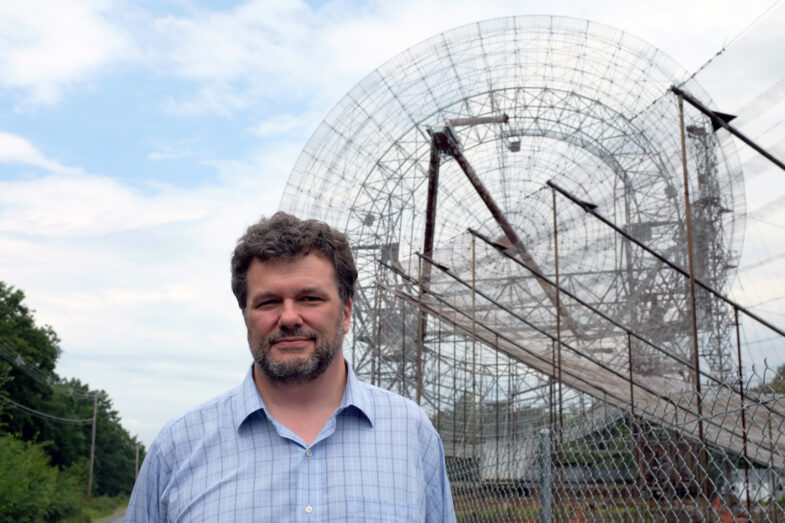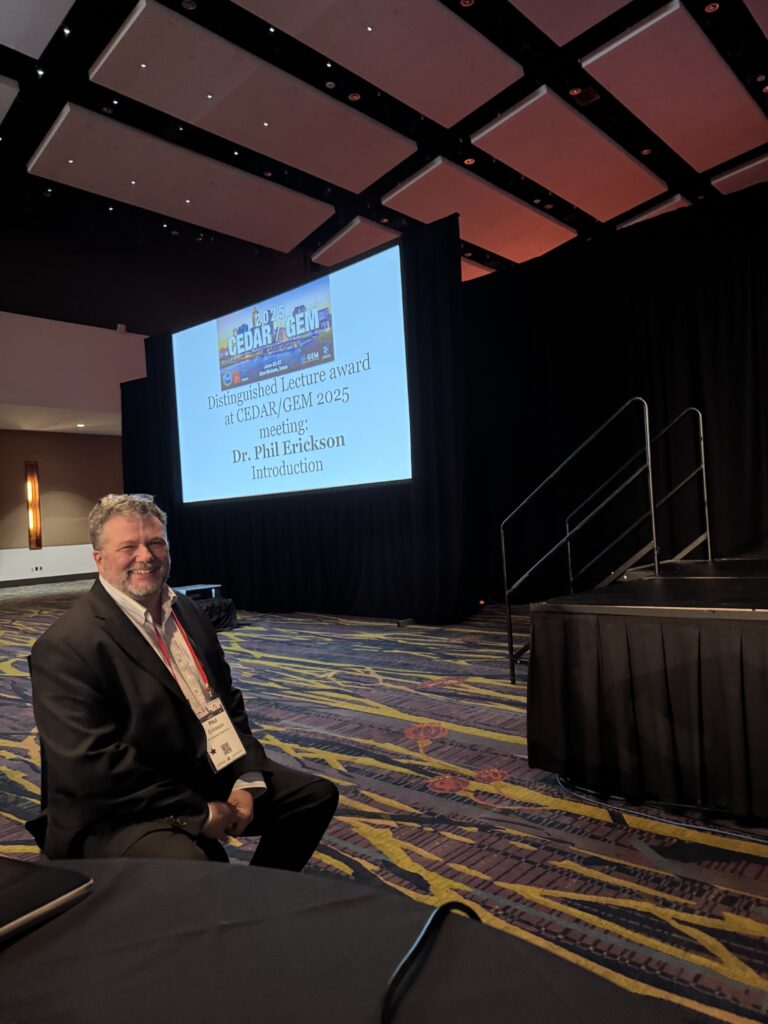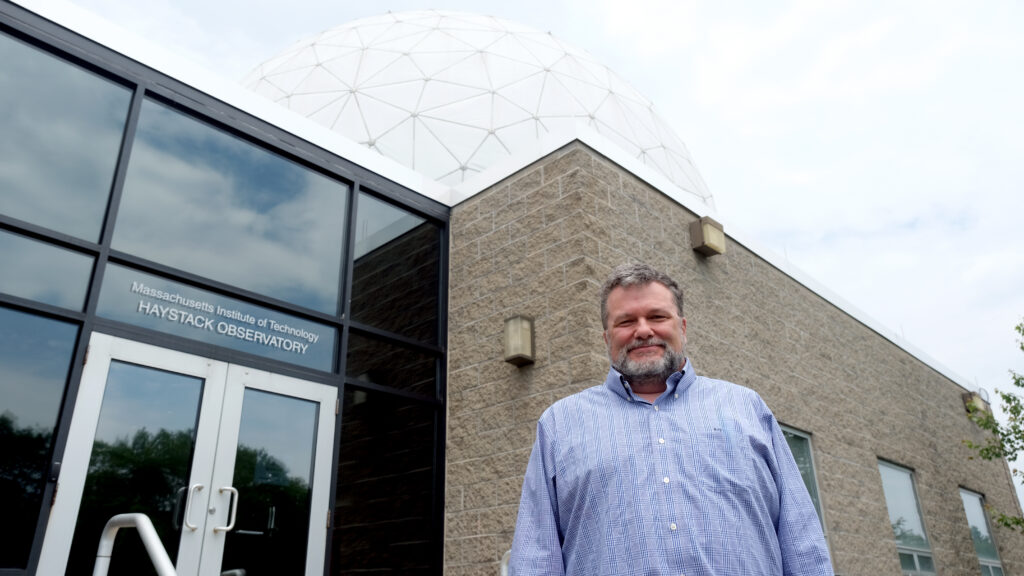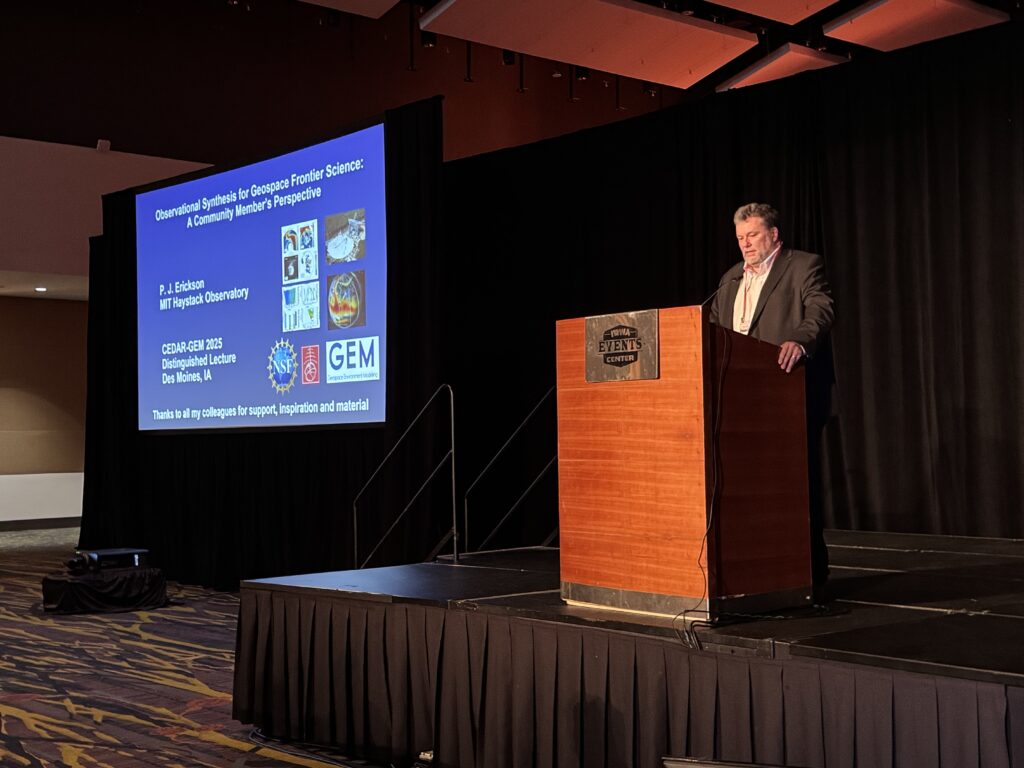
Haystack director awarded CEDAR Distinguished Lecture prize
Phil Erickson, director of MIT Haystack Observatory, gave the prestigious CEDAR Distinguished Lecture on June 23 at the recent 2025 NSF joint Coupling, Energetics, and Dynamics of Atmospheric Regions (CEDAR) and Geospace Environment Modeling (GEM) Workshop in Des Moines, Iowa.

The CEDAR Distinguished Lecture, an invited plenary lecture, is awarded in recognition of “sustained professional contributions … [over] a long-term, sustained body of work.” Erickson’s presentation, “Observational Synthesis for Geospace Frontier Science: A Community Member’s Perspective,” provided a review of new and powerful observational tools for studying Earth’s upper atmosphere and near-Earth space from both ground and in orbit, connecting these assets to frontier science from the National Academies’ recent 2024–2033 Decadal Survey for Solar and Space Physics. His lecture encouraged a system-scale approach to using these observations for unlocking the mysteries of space weather and its effects on human society.
Haystack’s Larisa Goncharenko, associate director and lead scientist of the geospace science research group, said, “Dr. Erickson is a leading expert on upper atmospheric remote sensing techniques involving ground- and space-based data. Phil possesses a unique combination of space physics knowledge and technical expertise that was foundational for multiple advancements in upper atmospheric research. Phil is a passionate leader and tireless advocate for CEDAR/GEM science.
Erickson, who completed his PhD at Cornell University in 1998, has more than 30 years at Haystack Observatory as an ionospheric and magnetospheric experimental scientist, conducting fundamental research on the near-Earth space environment. He led the Haystack Geospace research group since 2015 and later assumed the Director role at Haystack in January 2024. Erickson’s work also includes extensive education and public outreach efforts, including active engagement with the amateur radio community and the HamSCI citizen science effort. He served until recently as the principal investigator for the NSF-funded Millstone Hill Geospace Facility (MHGF), which is used for extensive mid-latitude ionospheric sensing across the heavily populated North American continent.

Erickson said, “Delivering the CEDAR Distinguished Lecture is an unexpected and deeply meaningful honor, with direct connection to CEDAR’s fundamental role in community workforce development including my own attendance at the workshop under NSF support beginning in 1990 as a graduate student. CEDAR’s science and extensive collaborations are globally recognized as leading human society’s efforts to understand Earth’s entire atmosphere and space weather from the ground to the solar system. I am grateful for NSF’s continued strong support of this program and its many achievements.”
The nomination for Erickson described how his work has “profoundly enriched the CEDAR community through the unique combination of space physics knowledge and a deep technical knowledge that enables space physics advancements.”

The nomination also suggested that he was the most deserving candidate for the CEDAR Distinguished Lecture Award, as “not only a technical visionary and a scientist who performed truly transformational research, but also an effective listener, problem solver and all-around good guy.”
Erickson continues his research efforts at Haystack in geospace science, including continued collaboration both internationally and within the CEDAR community.